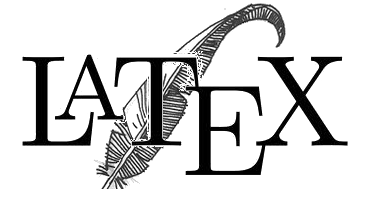POTENTIAL CUSTOMER ANALYSIS USING K-MEANS WITH ELBOW METHOD
Abstract
This study aims to obtain cluster data of potential customers using the K-Means clustering approach supported by the elbow method to determine the correct number of clusters. The data sample that was processed was 100 customer data from a minimarket containing three criteria (gender, age, and purchase retention). The number of initial clusters is determined as 5 and then processed by calculating K-Means. The calculation of the SSE value in the K-Means process produces the lowest SSE value, and the sharpest elbow angle graph visualization is in cluster 4. So, it can be stated that the best number of clusters in this K-Means calculation is four (4) which are used as material for further analysis. Then the analysis results of four (4) clusters state that potential customers are those with high purchase retention, consisting of female customers who dominate in the three (3) clusters. Most potential female customers are customers with an age range above 35 years. Meanwhile, customers with less potential are spread across each cluster with varied gender and age but are not dominant. Thus, this knowledge can be used as a consideration for the management in determining the right promotion strategy.
Full Text:
PDFReferences
R. Yazdani, M. J. Taghipourian, M. M. Pourpasha, and S. S. Hosseini, “Attracting Potential Customers in E-Commerce Environments: A Comparative Study of Metaheuristic Algorithms,” Processes, vol. 10, no. 2, 2022, doi: 10.3390/pr10020369.
R. Piehler, M. Schade, I. Hanisch, and C. Burmann, “Reacting to negative online customer reviews: Effects of accommodative management responses on potential customers,” J. Serv. Theory Pract., vol. 29, no. 4, pp. 401–414, 2019, doi: 10.1108/JSTP-10-2018-0227.
M. Zhan, H. Gao, H. Liu, Y. Peng, D. Lu, and H. Zhu, “Identifying market structure to monitor product competition using a consumer-behavior-based intelligence model,” Asia Pacific J. Mark. Logist., vol. 33, no. 1, pp. 99–123, 2021, doi: 10.1108/APJML-08-2019-0497.
T. Schulz, M. Böhm, H. Gewald, and H. Krcmar, “Smart mobility – an analysis of potential customers’ preference structures,” Electron. Mark., vol. 31, no. 1, pp. 105–124, 2021, doi: 10.1007/s12525-020-00446-z.
B. Wang, G. Wang, Y. Wang, Z. Lou, S. Hu, and Y. Ye, “A K-means clustering method with feature learning for unbalanced vehicle fault diagnosis,” Smart Resilient Transp., vol. 3, no. 2, pp. 162–176, 2021, doi: 10.1108/srt-01-2021-0003.
D. Marutho, S. Hendra Handaka, E. Wijaya, and Muljono, “The Determination of Cluster Number at k-Mean Using Elbow Method and Purity Evaluation on Headline News,” in Proceedings - 2018 International Seminar on Application for Technology of Information and Communication: Creative Technology for Human Life, iSemantic 2018, 2018, pp. 533–538, doi: 10.1109/ISEMANTIC.2018.8549751.
K. Venkatachalam, V. P. Reddy, M. Amudhan, A. Raguraman, and E. Mohan, “An Implementation of K-Means Clustering for Efficient Image Segmentation,” in 10th IEEE International Conference on Communication Systems and Network Technologies An, 2021, no. 2020, pp. 224–229, doi: 10.1109/csnt51715.2021.9509680.
C. Baldassi, “Recombinator-k-means: An evolutionary algorithm that exploits k-means++ for recombination,” in IEEE Transactions on Evolutionary Computation, 2022, no. c, pp. 1–13, doi: 10.1109/TEVC.2022.3144134.
A. Aslam, U. Qamar, R. A. Khan, and P. Saqib, “Improving K-Mean Method by Finding Initial Centroid Points,” in International Conference on Advanced Communication Technology, ICACT, 2020, vol. 2020, pp. 624–627, doi: 10.23919/ICACT48636.2020.9061522.
C. Cai and L. Wang, “Application of improved k-means k-nearest neighbor algorithm in the movie recommendation system,” in Proceedings - 2020 13th International Symposium on Computational Intelligence and Design, ISCID 2020, 2020, pp. 314–317, doi: 10.1109/ISCID51228.2020.00076.
A.L Hananto, P. Assiroj, B. Priyanta, Nurhayati, A.Fauzi, A.Y. Rahman and S.S. Hilabi. “Analysis of Drug Data Mining with Clustering Technique Using K-Means Algorithm,” in Journal of Physics: Conference Series, 2021, vol. 1908, no. 1, doi: 10.1088/1742-6596/1908/1/012024.
A. M. A. Alan Fuad Jahwar, “Meta-Heuristic Algorithms For K-Means Clustering : A Review,” Pjaee, vol. 17, no. 7, pp. 1–20, 2021.
M. A. Syakur, B. K. Khotimah, E. M. S. Rochman, and B. D. Satoto, “Integration K-Means Clustering Method and Elbow Method for Identification of the Best Customer Profile Cluster,” in IOP Conference Series: Materials Science and Engineering, 2018, vol. 336, no. 1, doi: 10.1088/1757-899X/336/1/012017.
J. Zhou and D. Hu, “Applications of Improved Ant Colony Optimization Clustering Algorithm in Image Segmentation,” TELKOMNIKA (Telecommunication Comput. Electron. Control., vol. 13, no. 3, p. 955, 2016, doi: 10.12928/telkomnika.v13i3.1803.
A. Dwiastuti, A. Larasati, and E. Prahastuti, “The implementation of Customer Relationship Management (CRM) on textile supply chain using k-means clustering in data mining,” MATEC Web Conf., vol. 204, 2018, doi: 10.1051/matecconf/201820404017.
K. Yang and R. Miao, “Research on Improvement of Text Processing and Clustering Algorithms in Public Opinion Early Warning System,” 2018 5th Int. Conf. Syst. Informatics, ICSAI 2018, no. Icsai, pp. 333–337, 2019, doi: 10.1109/ICSAI.2018.8599424.
M. Cui, “Introduction to the K-Means Clustering Algorithm Based on the Elbow Method,” Accounting, Audit. Financ., vol. 1, pp. 5–8, 2020, doi: 10.23977/accaf.2020.010102.
D. M. SAPUTRA, D. SAPUTRA, and L. D. OSWARI, “Effect of Distance Metrics in Determining K-Value in K-Means Clustering Using Elbow and Silhouette Method,” 2020, vol. 172, no. Siconian 2019, pp. 341–346, doi: 10.2991/aisr.k.200424.051.
H. Xie, C.P. Lim, Y. Yu, C. Liu and H. Liu., “Improving K-means clustering with enhanced Firefly Algorithms,” Appl. Soft Comput. J., vol. 84, 2019, doi: 10.1016/j.asoc.2019.105763.
R. Nainggolan, R. Perangin-Angin, E. Simarmata, and A. F. Tarigan, “Improved the Performance of the K-Means Cluster Using the Sum of Squared Error (SSE) optimized by using the Elbow Method,” in Journal of Physics: Conference Series, 2019, vol. 1361, no. 1, doi: 10.1088/1742-6596/1361/1/012015.
DOI: http://dx.doi.org/10.26798/jiko.v7i2.911
Article Metrics
Abstract view : 868 timesPDF - 741 times
Refbacks
- There are currently no refbacks.
Copyright (c) 2023 Fitri Marisa








1.png)
